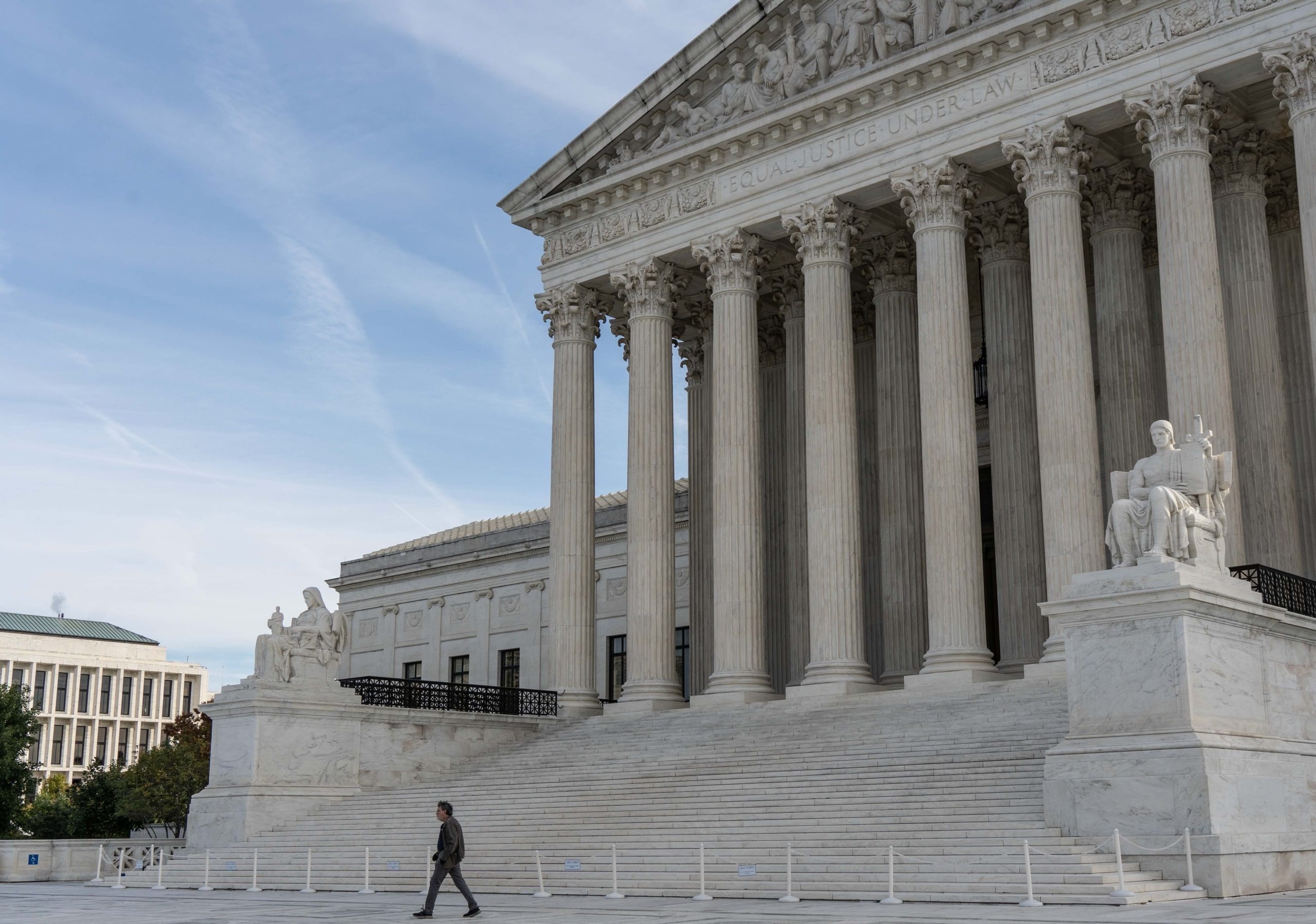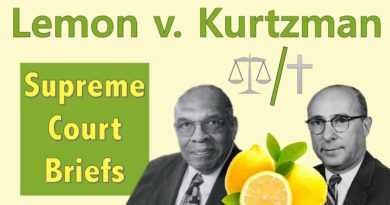Supreme Court upholds regulations on “ghost weapons”
OPINION ASSESSMENT
This article was updated on March 26 at 2:04 p.m.
The Supreme Court upheld a Biden-era rule regulating so-called “ghost guns” – untraceable weapons without serial numbers, assembled from components or kits that can be (Amy Lutz via Shutterstock)
This article was update on March 26 at 2:04 p.m.
The Supreme Court on Wednesday upheld a Biden-era rule regulating so-called “ghost guns” – untraceable weapons without serial numbers, assembled from components or kits that can be bought online. The ATF adopted the rule to address an “exponential increase” in ghost guns. The Gun Control Act defines “firearms” as “any weapons… that will or is designed to expel a bullet by the action or an explosive,” which includes “the frame or the receiver of any such weapon.”
The ATF argued that the 2022 rule is consistent with the law’s language because it defines the term ” The rule clarified that “frame” and receiver” included partially completed or disassembled receivers or frames that could be “readily converted” to work as a receiver or frame. A federal district judge in Fort Worth prohibited the agency from applying the rule anywhere in the United States.
Although the conservative U.S. Court of Appeals for the 5th Circuit largely upheld that decision, a divided Supreme Court put the district judge’s order on hold, allowing the Biden administration to enforce the rule while it appealed. Four justices – Clarence Thomas, Samuel Alito, Neil Gorsuch, and Brett Kavanaugh – indicated that they would have denied the government’s request then.
In a 24-page opinion by Gorsuch on Wednesday, the court upheld the rule.
Congress enacted the Gun Control Act, Gorsuch explained, because it found that then-current “gun control measures … allowed criminals to acquire largely untraceable guns too easily.” The act requires manufacturers to put a serial number on guns and regulates commercial gun sales by (among other things) requiring gun manufacturers and dealers to conduct background checks and keep records of gun sales.
Advances in technology, Gorsuch noted, such as 3D printing and reinforced polymers, have changed the way in which guns are manufactured and sold. And in particular, “companies are able to make and sell weapon parts kits that individuals can assemble into functional firearms in their own homes.” These kits are popular among hobbyists, Gorsuch wrote, but also among criminals, because some manufacturers and sellers do not regard them as “firearms” subject to the Gun Control Act and therefore do not comply with the act’s requirements – leading to “an explosion of crimes” around the country.
Gorsuch emphasized that the challengers in this case were not asking the Supreme Court to decide whether the rule regulating ghost guns could be applied to specific kinds of ghost guns – that is, to “particular weapons parts kits or unfinished frames or receivers.” Instead, he stressed, the challengers had asked the courts to hold that the rule could not be applied to any ghost guns. The Supreme Court refused to do this. He argued that the text of the act imposes two requirements. Gorsuch, in contrast to the 5th Circuit, concluded that “at the very least, some kits” will satisfy these requirements. The name of the kit is “Buy Build Shoot.”
And the “Buy Build Shoot,” kit also meets the second criterion, because it can be “readily converted” into a firearm, “because it requires no more time, effort, expertise, or specialized tools to complete” than a starter gun, which is Really, the kit’s name says it all: ‘Buy Build Shoot.'”
And the “Buy Build Shoot” kit also meets the second criterion, because it can be “readily converted” into a firearm, “for it requires no more time, effort, expertise, or specialized tools to complete” than a starter gun, which is explicitly mentioned in the Gun Control Act.
Gorsuch acknowledged that “
eapons parts kits vary widely” and “may require more time, expertise, or specialized tools to finish.” But the Supreme Court does not need to decide in this case when “a kit may be so incomplete or cumbersome to assemble that” the ATF can no longer regulate it under the Gun Control Act, he determined.
Gorsuch concluded, again in contrast to the 5th Circuit, that the Gun Control Act also allows the ATF to regulate partially finished frames and receivers. Gorsuch’s opinion included a picture showing a “complete Glock-variant frame” next to a “partially completed frame” sold by Polymer80. This was done to highlight what Gorsuch called the “main difference” between the two: a pair plastic tabs the buyer would have to remove and then add pins. He also noted that “an ordinary person would call Polymer80’s product a firearm ‘frame’ even though it requires a little work to complete.” Gorsuch asked, “Just look at the second picture again.” “What else would it be called?”
Gorsuch noted that the ATF had in the past “consistently” interpreted the Gun Control Act as applying to unfinished frames and receives, including those no more finished than Polymer80’s product. These “contemporary views” “can prove the meaning of the law And indeed, he continued, the challengers say that that they do not dispute the ATF’s “prior practice” – “a concession that all but gives the game away.” Although the challengers contend that the new rule regulating “ghost guns” goes too far, he said, “for our purposes, what matters is that even the plaintiffs do not really insist that” the rule “reaches only finished frames and receivers.”
As with weapons parts kits, Gorsuch conceded that the court’s “reasoning has its limits.” “Some products,” he wrote, “may be so far from a finished frame or receiver that they cannot fairly be described using those terms. But this case,” he wrote, “requires us to explore none of that.”
Gorsuch rejected the challengers’ request to rule in their favor based on either the rule of lenity – the idea that when a criminal law is ambiguous, it should be applied in the way that is most favorable to the defendant – or the doctrine of constitutional avoidance, which instructs courts to avoid ruling on constitutional issues unless it is absolutely necessary. Gorsuch, perhaps the court’s strongest advocate for the rule of lenity, countered that “neither lenity nor avoidance has any role to play where ‘text, context, and structure’ decide the case.” “The Gun Control Act embraces,” Gorsuch concluded, and thus permits ATF to regulate, some weapons parts kits and unfinished frames or receivers, including those we have discussed.”[w]Justice Brett Kavanaugh wrote a two-page concurring opinion in which he observed that the line between ghost guns to which the ATF’s rule (and therefore the requirements of the Gun Control Act, such as background checks, licensing, and serial numbers) does or does not apply “is not entirely clear.” Individuals can face criminal liability for violating most of those requirements only if the government can show that they knew their conduct was illegal, Kavanaugh noted – a high bar.
But someone who violates the background-check requirement, Kavanaugh continued, is subject to a lower standard, and can face criminal liability even if they were unaware that they were violating the law. Kavanaugh suggested that the federal government would avoid the potential fairness problems that could arise in such a situation “by adhering to its oral-argument representation that it would likely decline to bring charges in those circumstances.”
Justice Sonia Sotomayor was less concerned about the issues that Kavanaugh raised, deeming them “unfounded” in her own two-page concurring opinion. She wrote that firearms manufacturers and dealers had long been in compliance with the Gun Control Act, and the ATF’s rule “should come as no surprise.” However, if manufacturers are unsure whether the rule applies to them, she argued, the ATF will “encourage” them to contact the agency for guidance. She added that manufacturers have been taking advantage of this process for years, and a failure to do that could suggest that they are being willful. According to Thomas, “the ordinary meaning of ‘frame’ or’receiver’ does not include unfinished frames or receivers.” The same is true for an object that “may readily be converted” into a firearm if it is already a “weapon.” However, an object that has not yet been converted does not qualify as a “firearm.” Thomas concluded that “Congress” could have authorized ATF’s regulation of any part or object easily convertible into a firearm. I would adhere to the words Congress enacted.” I would adhere to the words Congress enacted.”
Alito disagreed with the majority’s decision to use the same test that courts use when reviewing challenges to the constitutionality of laws as they are written, without regard to particular facts. He argued that the challengers had not agreed to such a test and the federal government only gave it “cursory attention” in its brief. Alito wrote in the court’s July decision that sent First Amendment challenges against Florida and Texas laws that regulate large internet platforms to lower courts for a second look that the Salerno Test was important because it respected the legislative authority of the body that enacted those laws. But this “threat to statutory authority” is not present when regulations are challenged He would have instructed the litigants to either brief this issue, or sent the case back to lower court to be considered.






